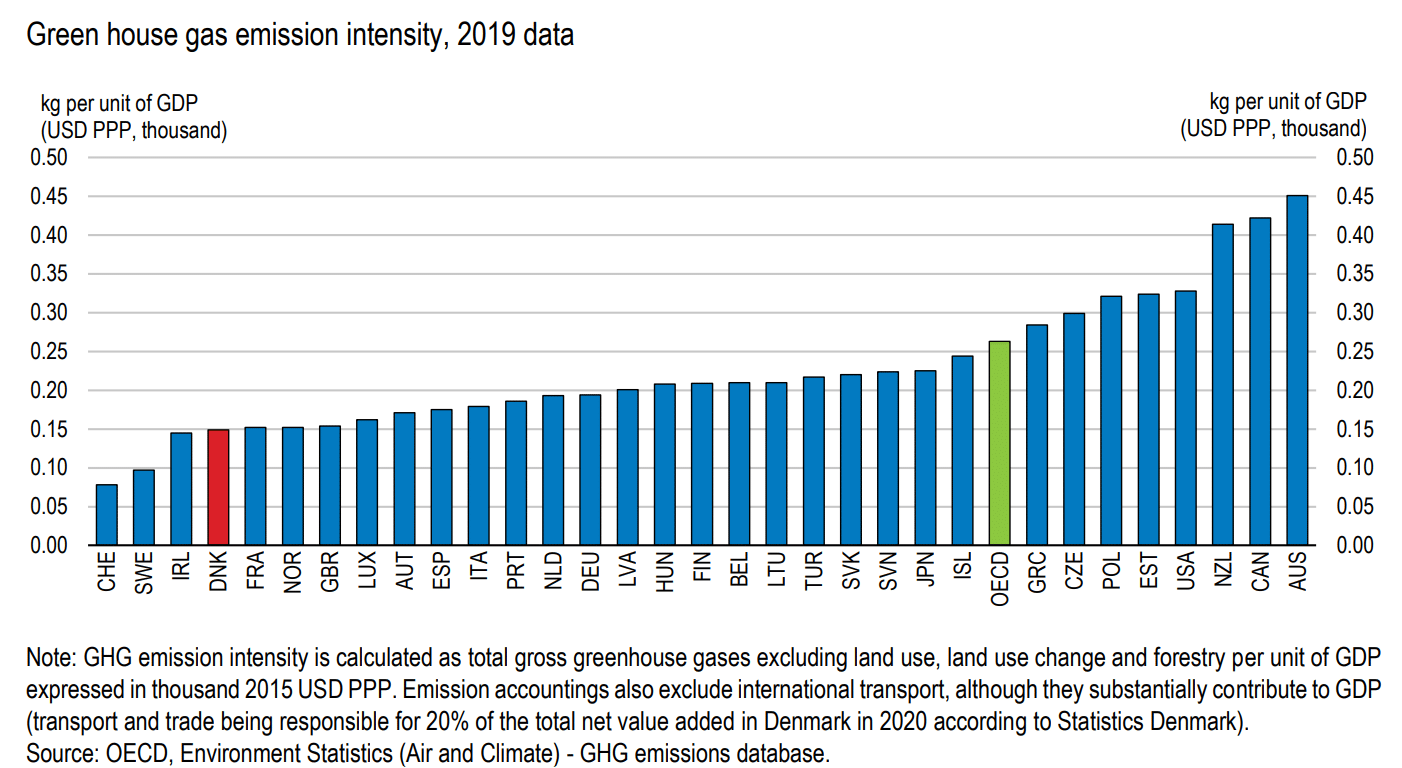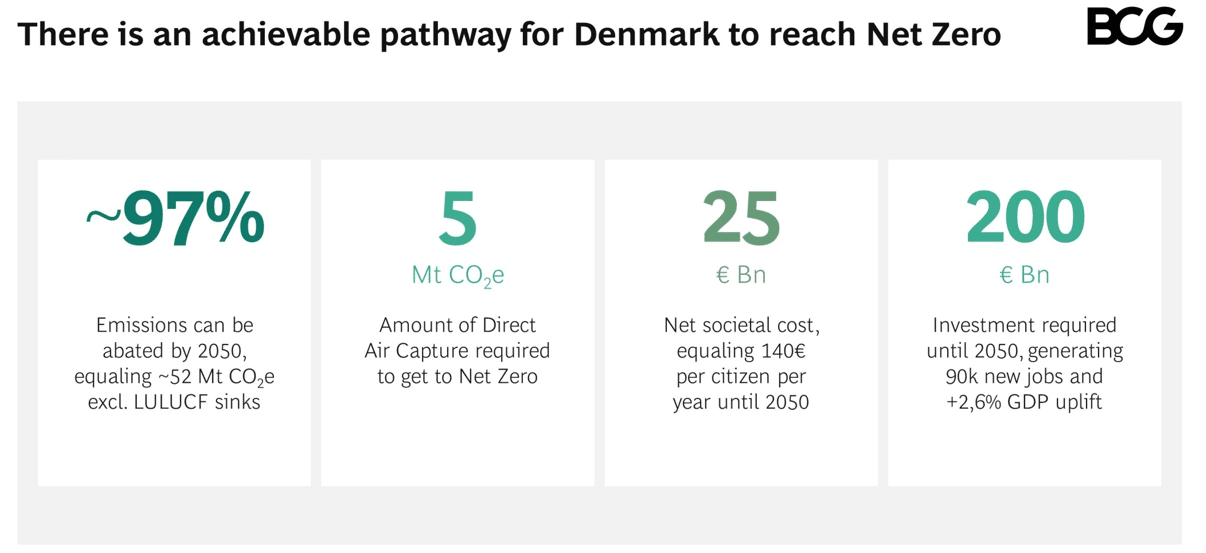Denmark has made history with the largest government procurement of durable carbon dioxide removal (CDR), totaling almost $24 million (Dkr 166 million). The Danish Energy Agency has awarded contracts to three companies for new CCS (CO2 Capture and Storage) projects, marking the completion of the fund for negative emissions (NECCS fund).
These projects will ensure the capture and storage of 160,350 tonnes of CO2 annually from 2026 to 2032. This is equivalent to the CO2 absorption of around 16,000 hectares of forest per year.
Denmark’s Carbon Capture Coup
The agreement, the second-largest of its kind globally, involves purchasing 1.1 million tons of durable carbon removal from three companies: BioCirc, Bioman ApS, and Carbon Capture Scotland. The largest CDR deal is between Microsoft and Ørsted, involving the purchase of 2.76 million metric tons of removal credits.
BioCirc CO2 ApS and Bioman ApS have secured contracts for CO2 capture and storage, while Carbon Capture Scotland Limited is expected to finalize its contract soon.
The successful bidding process indicates market interest in capturing and storing biogenic CO2 from biomass.
All three projects meet tender requirements and demonstrate the capacity for CO2 capture, transport, and storage. They are expected to advance and mature the CCS value chain in Denmark, with plans to store CO2 locally.
Each project has different support levels and will capture varying amounts of CO2. Together, they will capture and store 160,350 tonnes of biogenic CO2 annually starting from 2026 until the end of the contract period in 2032. Support will be provided upon confirmation of permanent underground storage of the captured CO2.
The NECCS fund, established as part of the Danish Financial Act of 2022, is designed to support negative emissions via CCS technology. Unlike capturing and storing fossil CO2, which merely reduces emissions, capturing and storing biogenic CO2 from sources like biomass results in negative emissions.
That’s because the CO2 was originally absorbed from the air by plants, effectively removing CO2 from the atmosphere and storing it underground.
The fund aims to facilitate the capture and storage of biogenic CO2, thus contributing to overall CO2 reduction efforts. While three contracts have been awarded from the NECCS fund, not all allocated funds have been used. There are also currently no plans for further bidding rounds.
Danish Decarbonization Drive Toward Net Zero
This move is part of Denmark’s net zero strategies, which originally aimed at reaching net zero emissions by 2050. But the new Danish government set forth ambitious climate change targets. It has set a world-leading goal of a 70% emission reduction by 2030 and net zero by 2045.
Additionally, they plan to reduce CO2 emissions nationally by 110% by 2050, surpassing 1990 levels and reaching a negative emission rate. The Danish Parliament also decided to phase out oil and gas extraction in the North Sea by 2050.
To support these objectives, the government intends to implement an emission levy on the agriculture sector and impose a tax on air travel, similar to measures adopted in Germany and Sweden.
Denmark has seen a consistent decline in greenhouse gas (GHG) emissions, with the electricity generation sector leading the way. The sector has reduced its emissions by ⅔ between 1990 and 2019, largely due to the increased use of renewables. This has resulted in Denmark having one of the lowest emission intensities among OECD countries.
Over the past decade, Denmark has also reduced its energy intensity by a quarter, indicating a shift towards a more energy-efficient economy. Renewable energy sources, particularly biofuels, and wind power, play a significant role in Denmark’s energy mix. It contributes to its relatively high share of the total energy supply from renewables.
Despite these achievements, Denmark still faces challenges related to demand-based emissions. While production-based emissions have consistently declined over the past fifteen years, demand-based emissions remain significant.
However, Denmark’s efforts to reduce its energy intensity and increase renewable energy use demonstrate its commitment to transitioning towards net zero.
Denmark’s Roadmap to Net Zero
According to BCG’s new decarbonization roadmap for the Nordic nations, Denmark can reach its net zero goal through this pathway:
To achieve its climate targets, Denmark must address four challenging sectors:
- Public electricity and heat production must transition to fossil-free sources.
- The transport sector needs to adopt greener practices.
- Agriculture must strive to become carbon neutral.
- The industry sector must work towards becoming emission-free.
CCS technology can help Denmark’s industrial sector in reducing carbon emissions, which can contribute to a 34% reduction in the country’s total emissions. Other measures include enhancing fuel efficiency in engines, optimizing processes, and reducing energy consumption from equipment.
Moreover, using bio-based materials has the potential to abate 0.8 Mt CO2e emissions by 2050. Notably, implementing carbon capture and storage for about 50% of cement emissions are crucial steps toward achieving Denmark’s climate goals.
The NECCS announcement coincides with recent agreements among 5 northern European countries for the transport and storage of CO2 in the North Sea. Denmark’s proactive approach to carbon reduction includes previous agreements with Belgium, the Netherlands, and France to facilitate cross-border CO2 transport and storage.
All these initiatives are part of the Danish government’s CCS plan to ramp up the process for capture and storage. Under this proposed plan, Denmark earmarked EUR 3.6B (Dkr 27B) for CCUS tenders.
Denmark is charting an impressive course towards achieving net zero emissions through a combination of innovation, investment, and collaboration. With groundbreaking carbon capture projects like the NECCS fund and ambitious climate targets, Denmark is largely contributing to the global effort of combatting climate change.




